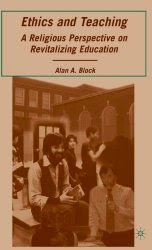Journal of the Plague Year 2
I guess I don’t know how this will all end. I am not even sure that it will all end. So, let me see where we are in these present moments. I think this Sunday will begin the fifty-fourth week of what has come to termed The Pandemic: the sheltering-in-place and the imperative for social distancing, the wearing of facemasks and latex gloves out in the streets and the marketplaces. The directive demands that we keep six feet between us: ironically, I consider, also the depth of a grave. I have learned that the legal deepness of the grave harkens back to the infestation of the Plague in London in 1665 when the Lord Mayor and his council mandated that graves of the dead be dug to that measure! Though the restrictions are easing and the death toll is slowing, in the United States more that 550,000 people have already died of the corona virus; across the world almost 4 million have succumbed. And now the threat of virus variants threaten the recovery. In the United States thousands of businesses have permanently closed and thousands more have dramatically altered their daily operations. Vaccines are available for those who want them, but too many refuse for various reasons.
I do not know for how much longer this will go on. The global economy has ground to a halt, and though I suspect that it will rebound, its decline reminds me how fragile are our financial securities. Today’s news reports that million in the United States have applied for unemployment benefits so far, many of whom may never be called back to work. The burden has fallen most heavily on those least able to bear it. The restaurants, the bookstores, the shoe stores, the hair salons and barber shops; the coffee houses, the health clubs, the religious institutions; schools and universities— all, all have been shuttered for more than a year. Educational organizations have turned to online delivery systems, and I fear that what might be ultimately learned from these methodologies will only reveal how much money can now be saved by eliminating actual classrooms. I do not doubt who will ultimately benefit from these savings. School bookrooms will become obsolete, supplies of paper and writing utensils will disappear, online classes will be available only to those with the financial resources to maintain internet access, laboratory experiences will be lost, and conversations will be negotiated through heavily mediated programs that will compromise spontaneity and silence trial and error classroom talk. School have begun to reopen after almost a year of being closed, but many children will remain home for fear of infection. And all have lost a year.
We have been torn today from our daily lives and living. Those of us who will be fortunate to survive will experience the world into which we reenter as fundamentally changed. We will have changed. Camus presciently describes one of the most serious effects of the current pandemic. The narrator of The Plague, Dr. Rieux, refers to the experience of forced isolation in the plague-infested city of Oran as exile—what we today call self-quarantine and sheltering in place. And from this situation, we, like the townspeople of Rieux’s Oran, have come to know “the incorrigible sorrow of all prisoners in exile, which is to live in company with a memory that serves no purpose” (Camus 1948, p. 73). Because our pasts can now offer little instruction for our lives in the present, the presence of plague has irrevocably changed our lives. Our pasts will no longer serve as a viable influence on the future. Vague as any future might inevitably be, we nevertheless normally would expect that the future should remain continuous with some part of the past. But today this is no longer true. David Brooks has written in The New York Times, “Everywhere I hear the same refrain: We’re standing at a portal to the future; we’re not going back to how it used to be.” But no one can say where we might be going or how we might do so. We might teach the past, but not as a roadmap for the future. What Rieux says of separated lovers living in exile may be true as well for today’s citizens: “Without memories, without hope, they lived for the moment only. Indeed, the here and now had come to mean everything to them” (Camus 1948, p. 182). Citizens today exist as if they live on an island. Perhaps the growing complaints concerning the shut-down, and eventually the increasingly desperate violent protests to reopen, reflect the delusional belief that a return to normal is possible. But such behavior reflects a basic misunderstanding of the present. This present will soon disappear into an unrecoverable past. As exiles we are condemned to a present that now (an ironic term itself) exists out of context. I think the situation is worse than it might have been for Tantalus: we cannot even be tempted . . . we feel hopeless.











